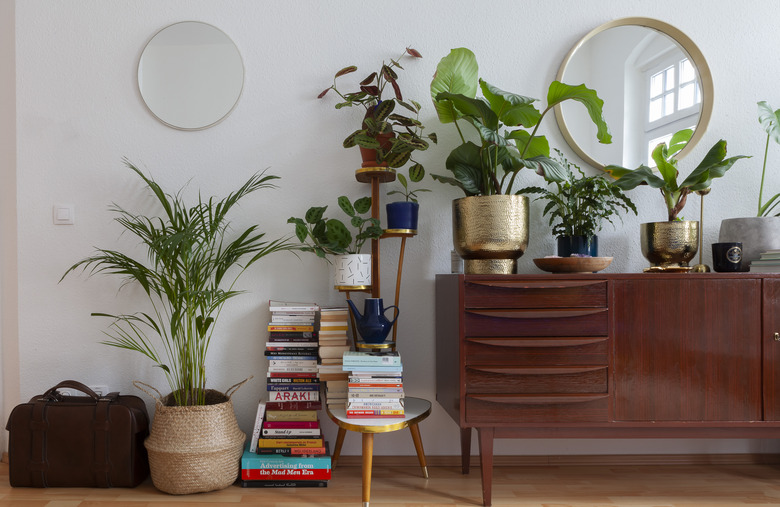Can Plants Talk? You'll Want To Read This
You might say "good morning" to your houseplants as you get your first cup of coffee, but you don't expect them to talk back — do you? Because plants don't communicate ... right? Well, botanists might not agree with that statement.
Plants will never give you a chirpy hello, but that doesn't mean they don't communicate. Research is still coming in, but what scientists know so far will amaze you.
Plants Exchange Information
Plants Exchange Information
You may think your plants are just sitting in their pots or beds, quietly growing. But that underestimates the complex plant evolution. More is going on under the soil than meets the eye.
Plants are paying much more attention to the world around them than most of us realize. Although plants are "rooted" in one location, they monitor their environment and react to it. They also seem conscious of the plants around them and react to underground signals their neighbors send out.
Types of Communication
Types of Communication
In nature, plants live together in communities. Because they cannot move, plants have developed various ways of perceiving their surroundings and responding to them. You can think of this as plant communication.
Plant communication isn't like human communication, with words and sighs and facial expressions. Rather, it involves information cues sent from plant to plant. The cues can be physical, like changes in light quality as a nearby plant grows, or biochemical. Biochemical cues happen when one plant produces compounds that other plants pick up on.
What Do Plants Tell Each Other?
What Do Plants Tell Each Other?
So what might plants tell each other when they are sending information under the soil? No, they don't gossip about the human gardeners. Rather, they give information about what is happening to them. For example:
- Plants get and give information when they touch each other. For example, when tree canopies touch, both trees "interpret" this and stop expanding. This is called "canopy shyness."
- Plants send out biochemical signals through their roots when they are stressed, even if the stress occurs above the ground. Neighboring plants monitor the signals through their roots and keep their root away from the area.
- Plants infected with certain diseases send biochemical cues to alert nearby plants; the plants on the receiving end activate genes to ward off the disease.
- Plants like sagebrush, attacked by certain caterpillars, release defensive proteins that prevent the insect from digesting protein and stunt its growth. Neighbor plants monitor the chemical signals and get their own defensive proteins in place proactively.
The Fungal Internet
The Fungal Internet
How do all these biochemical signals and cues pass from plant to plant? Scientists believe that trees and other plants communicate with each other using a mycelium network. Mycelium describes the relationship between plants and fungi living on their roots.
These fungi connect the roots of one plant to others and allow them to transfer information. Don't think of these fungi as mushrooms, but rather as the thin threads that make up mushrooms.
This "fungal internet" connects some 90 percent of the worlds' plants. Plants linking into this network can aid their neighbors by sharing nutrients and information.
References
Plants Can Also Communicate With Insects
If plant-to-plant communication is astonishing, what about plants reaching out to other species like insects? This had been established by studies involving the wild tobacco plant.
The wild tobacco plant is vulnerable to attack by the hornworm caterpillar. It recognizes the pest by its saliva, then sends out a chemical alert that summons predators of the insect, like the big-eyed bug. The predators arrive quickly and attack the caterpillars.
Plants Can Even Communicate With Mammals
Some tropical plants rely on bats for pollination and also for the nutrients in their bat guano. They can't send out an email, but they have evolved a system to get the bats to come.
For example, pitcher plants in Borneo (Nepenthes hemsleyan) have developed concave plant structures specifically designed to reflect bat echolocation, essentially GPS-ing the bats to the plant. They roost there and leave their nutrient-rich guano.



